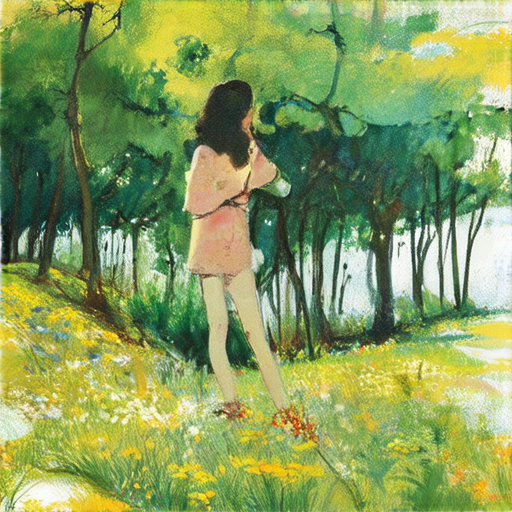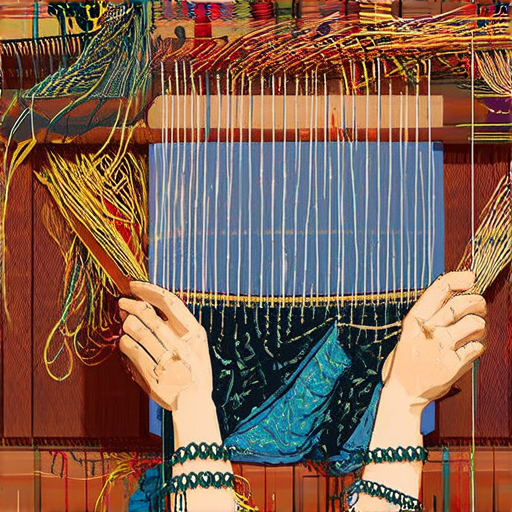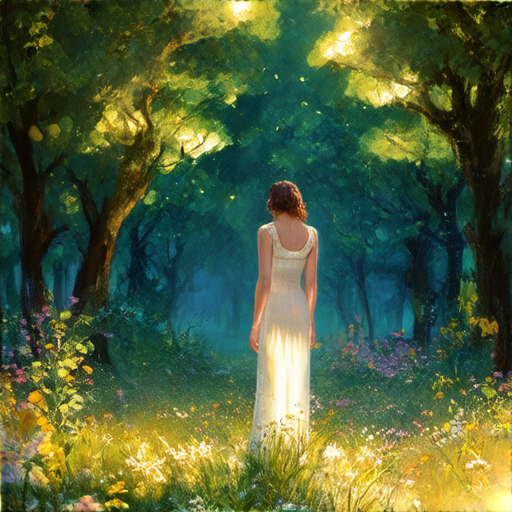As we delve into the realm of creative expression, one fundamental aspect stands out – the ability to weave tales through visual means. Visual storytelling, an art form that transcends words, has been a cornerstone of human communication since ancient times. From cave paintings to modern-day installations, the power of visual storytelling lies in its capacity to evoke emotions, spark imagination, and convey complex ideas in a single glance. By exploring the intricacies of this captivating art form, we can unlock new ways of understanding ourselves and the world around us.

What is Visual Storytelling with Example?
Visual storytelling is a form of content that uses elements such as images, infographics, animated videos, comics, illustrations, data visualizations, maps, and even GIFs and memes to tell an engaging, compelling story.
-
Types of Visual Storytelling
- Infographics: A combination of images, charts, and graphs to present information in a visually appealing way.
- Animated Videos: Short, engaging videos that use animation to convey a message or tell a story.
- Comics and Illustrations: Using images and text to tell a story or convey a message.
- Data Visualization: Presenting complex data in a graphical format to help understand and interpret the information.
- Maps: Using geographical maps to tell a story or convey information.
- GIFs and Memes: Using short, humorous animations or images to engage audiences.
-
Benefits of Visual Storytelling
- Increased Engagement: Visual storytelling can increase audience engagement and participation.
- Better Retention: Visual stories are more memorable and easier to retain than plain text.
- Improved Understanding: Visual storytelling can help explain complex concepts and ideas in a simple and easy-to-understand way.
- Increased Shareability: Visual stories are often shared more frequently than plain text content.
-
Examples of Visual Storytelling
- The New York Times’ interactive graphics and infographics.
- National Geographic’s stunning photography and videography.
- The Guardian’s use of data visualization to tell stories.
- Instagram’s use of GIFs and memes to engage audiences.
By incorporating visual storytelling into our content, we can increase engagement, retention, and shareability, making our message more effective and memorable.
What is Storytelling in Arts?
Storytelling in arts refers to the act of conveying a narrative or message through various forms of artistic expression, such as paintings, sculptures, installations, performances, and digital media. As an artist, I believe that storytelling is a powerful tool for communicating ideas, emotions, and experiences, allowing us to connect with others on a deeper level and create meaningful connections.
Types of Storytelling in Arts
There are several types of storytelling in arts, including:
- Narrative storytelling: This type of storytelling involves presenting a sequence of events or a story through a series of images or scenes.
- Symbolic storytelling: This type of storytelling uses symbols, metaphors, and allegories to convey meaning and themes.
- Abstract storytelling: This type of storytelling uses non-representational forms and colors to evoke emotions and moods.
- Interactive storytelling: This type of storytelling engages the audience through participation, dialogue, and choice.
Importance of Storytelling in Arts
Storytelling in arts is essential because it allows us to:
- Communicate complex ideas and emotions in a relatable way.
- Create empathy and understanding between people from different backgrounds and cultures.
- Evoke emotions and spark imagination in the audience.
- Preserve cultural heritage and traditions through the creation of artworks.
Examples of Storytelling in Arts
Some notable examples of storytelling in arts include:
- The works of Frida Kahlo, which often depicted her personal struggles and experiences.
- The installation art of Marina Abramovic, which explores the human body and its relationship with space and time.
- The films of Hayao Miyazaki, which often feature fantastical worlds and characters that explore themes of identity and community.
Best Practices for Storytelling in Arts
To effectively tell stories through art, consider the following best practices:
- Develop a clear concept and message that resonates with your target audience.
- Choose the right medium and style to convey your message effectively.
- Experiment and take risks to push the boundaries of what is possible.
- Engage with your audience and encourage feedback and discussion.
Conclusion
Storytelling in arts is a powerful tool for communication, connection, and creativity. By understanding the different types of storytelling, its importance, and best practices, we can harness its potential to create meaningful and impactful artworks that resonate with audiences worldwide.
The Four Principles of Visual Storytelling
As a creative platform for artists and art enthusiasts, I believe that understanding the four principles of visual storytelling is essential for effective communication and connection with our audience.
-
Authenticity
Authenticity is about being true to oneself and one’s vision. In visual storytelling, authenticity means staying true to the artist’s unique perspective and style, rather than trying to conform to someone else’s expectations.
I believe that authenticity is what sets apart great art from mediocre work. By embracing our individuality and imperfections, we can create something truly original and meaningful.
For example, the works of artist Behance showcase a diverse range of styles and perspectives, each one authentic and unique in its own way.
-
Sensory
Sensory storytelling engages the viewer’s senses, drawing them into the world of the artwork. This can be achieved through the use of color, texture, light, and other visual elements.
By incorporating sensory details, artists can create a richer and more immersive experience for the viewer, making the story feel more real and relatable.
For instance, the paintings of artist Andy Warhol are known for their bold colors and textures, which engage the viewer’s senses and draw them into the world of pop art.
-
Relevancy
Relevancy is about connecting with the audience on a deeper level. In visual storytelling, relevancy means tapping into the emotions, experiences, and values that resonate with the viewer.
By creating art that speaks to people’s lives and concerns, artists can establish a sense of connection and community with their audience.
For example, the works of artist Pablo Picasso often explored themes of social justice and human suffering, resonating with audiences around the world.
-
Archetype
Archetype refers to the universal symbols, motifs, and themes that appear across cultures and time. In visual storytelling, archetype means tapping into these shared human experiences and emotions.
By using archetypes, artists can create art that feels timeless and universally relatable, speaking to something deep within the viewer.
For instance, the works of artist M.C. Escher often featured intricate patterns and shapes that tapped into the viewer’s sense of wonder and curiosity.
By mastering these four principles of visual storytelling – authenticity, sensory, relevancy, and archetype – artists can create art that connects with their audience on a deeper level, inspiring and engaging them in ways that feel truly meaningful.

Visual Storytelling Through Art
I’m passionate about exploring the world of visual storytelling through art, where artists weave tales that captivate our imagination.
- Narrative art is a powerful medium that conveys emotions, experiences, and ideas through a combination of images, symbols, and metaphors.
- As an artist, I find myself drawn to the narrative art movement, which encourages me to experiment with different styles, techniques, and mediums to tell my stories.
- From traditional paintings to digital illustrations, narrative art has evolved over time, incorporating various forms of expression and communication.
The Art of Visual Storytelling
- Effective visual storytelling requires a deep understanding of human emotions, psychology, and behavior.
- A successful narrative art piece must engage the viewer on multiple levels, evoking feelings, sparking curiosity, and encouraging reflection.
- To master the art of visual storytelling, artists must develop their observational skills, learn to convey complex ideas simply, and balance aesthetics with meaning.
Tips for Creating Compelling Narrative Art
- Start with a strong concept or idea that resonates with you personally.
- Experiment with different mediums and techniques to find what works best for your story.
- Pay attention to composition, color palette, and symbolism to create a cohesive and impactful visual language.
- Don’t be afraid to take risks and push boundaries – narrative art is all about experimentation and innovation!
Exploring the World of Narrative Art
As an artist, I’m constantly inspired by the work of fellow creatives who push the boundaries of narrative art.
- Artists like ArtStation showcase incredible talent and creativity in the field of narrative art.
- The Behance community provides a wealth of inspiration and resources for artists looking to explore narrative art.
- Online platforms like DeviantArt offer a space for artists to share their work, receive feedback, and connect with others who share their passion for narrative art.
Conclusion
Narrative art is a dynamic and expressive medium that allows us to tap into our imagination, creativity, and emotional intelligence.
By embracing the principles of visual storytelling, experimenting with different techniques, and pushing the boundaries of what’s possible, we can create art that inspires, educates, and connects us on a deeper level.
What is Visual Storytelling in Art?
As an artist, I’m always looking for ways to engage my audience and convey my message effectively. One powerful tool in my arsenal is visual storytelling.
- Definition: Visual storytelling is the art of communicating a narrative or message through a combination of visual elements, such as images, videos, and graphics.
- Purpose: The primary objective of visual storytelling is to captivate the viewer’s attention, evoke emotions, and convey a specific message or theme.
Key Elements of Visual Storytelling
- Imagery: High-quality images that tell a story and evoke emotions.
- Composition: The arrangement of visual elements to guide the viewer’s eye and create a sense of balance and harmony.
- Color Palette: A carefully chosen color scheme that enhances the mood and atmosphere of the artwork.
- Tone and Mood: The emotional resonance of the artwork, which can be achieved through lighting, texture, and other visual elements.
Techniques for Effective Visual Storytelling
- Symbols and Metaphors: Using symbols and metaphors to convey complex ideas and themes in a subtle yet powerful way.
- Storyboarding: Creating a visual sequence of events to plan and organize the narrative.
- Character Development: Crafting relatable characters that drive the story forward and resonate with the audience.
- Emotional Connection: Establishing an emotional connection between the viewer and the artwork, often through shared experiences or universal emotions.
Best Practices for Visual Storytelling
- Keep it Simple: Avoid clutter and unnecessary details that can distract from the main message.
- Be Consistent: Maintain a consistent style and tone throughout the artwork to create a cohesive narrative.
- Experiment and Take Risks: Don’t be afraid to try new things and take risks in your visual storytelling approach.
- Engage with Your Audience: Encourage feedback and interaction with your artwork to foster a deeper connection with your viewers.
Conclusion
Visual storytelling is a powerful tool for artists to communicate their message and connect with their audience. By mastering the key elements and techniques of visual storytelling, you can create artworks that captivate, inspire, and resonate with your viewers.

Narrative Art: Telling Stories Through Visual Form
Narrative art is a powerful medium that brings stories to life through visual representation.
-
Definition:
Narrative art is a type of art that uses images, symbols, and other visual elements to convey a story or message.
-
Characteristics:
Narrative art often features characters, settings, and plot developments that engage the viewer and draw them into the story.
-
Purpose:
The primary purpose of narrative art is to communicate a message, tell a story, or evoke emotions in the viewer.
Narrative art can take many forms, including paintings, sculptures, installations, and digital media.
-
Visual Storytelling:
Narrative art relies heavily on visual storytelling, using images and symbols to convey meaning and emotion.
-
Emotional Connection:
A well-crafted narrative art piece can evoke strong emotions in the viewer, drawing them into the story and creating a lasting impression.
-
Cultural Significance:
Narrative art often reflects the cultural, social, and historical contexts in which it was created, making it a valuable resource for understanding the past.
As an artist, I believe that narrative art has the power to inspire, educate, and challenge our perspectives.
By exploring the world of narrative art, we can gain a deeper understanding of ourselves and the world around us.
At Artfull Journey, we celebrate the beauty and diversity of narrative art, and invite you to join us on this creative journey.

0 Comments